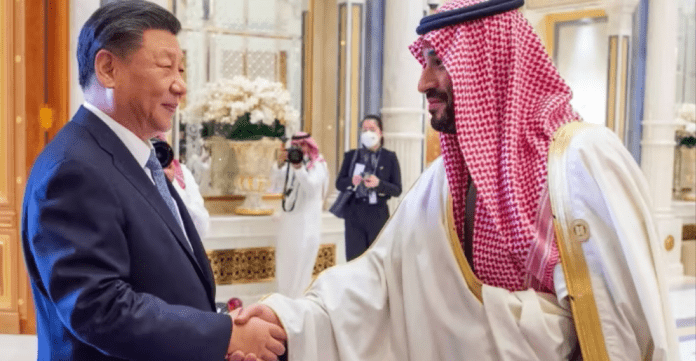The deepening of ties between China and Saudi Arabia can be viewed as a significant development towards multipolar alliance. A vast majority of staunch Western allies in the Persian Gulf have recently come to the realisation that cooperation with Eurasian countries like China and Russia will serve their interests more effectively. Although there is no immediate threat to the US-Arab alliance in the near term, there is no doubt that there is a major shift taking place in the Arab world.
On December 10, 2022, Chinese President Xi Jinping’s trip to Saudi Arabia came to a close. It was his first visit to the Middle East and can be defined as a historic diplomatic achievement with the Arab world. Xi also met with GCC (Gulf Cooperation Council) heads of state to reach and secure long-term strategic agreements in the fields of culture, economy, science and regional security. The Chinese foreign ministry described this as “an epoch-making milestone in the history of the development of China-Arab relations.”
The deepening of ties between the two countries is a major development towards multipolar alliance. The vast majority of other staunch Western allies in the Persian Gulf have recently also come to the realisation that cooperation with Eurasian countries like China and Russia will serve their interests more effectively.
Xi was greeted with a warm welcome, in contrast to US President Joe Biden’s underwhelming trip with Saudi Arabia this summer, where he requested increased oil production but provided nothing substantial in return. The trip, in the opinion of experts, not only produced favourable economic and commercial outcomes, but it also showed that China will continue to promote regional development and support peace in the Middle East.
During their meeting, China’s President Xi Jinping stated that China and Gulf nations should make full use of the Shanghai Petroleum and National Gas Exchange as a platform to carry out yuan settlement of oil and gas trade, thereby lessening the dependence on the US dollar.
China’s trade with Saudi Arabia rose to $87.3 billion in 2021, which saw a 39 percent increase over 2020, while US-Saudi trade has collapsed from $76 billion in 2012 to only $29 billion in 2021. Additionally, transactions between Beijing and Riyadh might now be carried out in Chinese Yuan, which will only escalate tensions in the US-Saudi relationship.
Other areas for collaboration in the following three to five years were also suggested by Xi in his speech, including finance and investment, innovation and new technologies, aerospace, and language and cultures.
On the energy front, China Energy Corp is building a sprawling 2.6 GW solar power station in Saudi Arabia, and Chinese nuclear developers are helping Riyadh develop its vast uranium resources.
It should be mentioned that Saudi Arabia too, has made progress in improving ties with China. Crown Prince Mohammed bin Salman launched Saudi Vision 2030 in 2016, firmly outlining a new foreign policy agenda that is much more in line with China’s “peaceful development” philosophy. Furthermore, at the start of 2017, Riyadh had actively assured its participation in BRI by securing its place on the New Silk Road initiative by a $65 billion agreement that incorporated the BRI and Saudi Vision 2030.
Also, in August 2022, the Saudi state oil company Aramco and China’s Petroleum and Chemical Corporation Ltd signed an MOU expanding on the aforementioned $65 billion cooperation deal of 2017, which involves the construction of Fujian Refining and Petrochemical Company (FREP) and Sinopec Senmei Petroleum Company (SSPC) in Fujian, China, and Yanbu Aramco Sinopec Refining Company (YASREF) in Saudi Arabia.
Although there is no immediate threat to the US-Arab alliance in the near term, there is no doubt that there is a major shift taking place in the Arab world. The US needs to wake up and realize that all cannot be taken for granted and needs to counter China`s charm offence in the region, if it wants to remain a power player in the Gulf.




